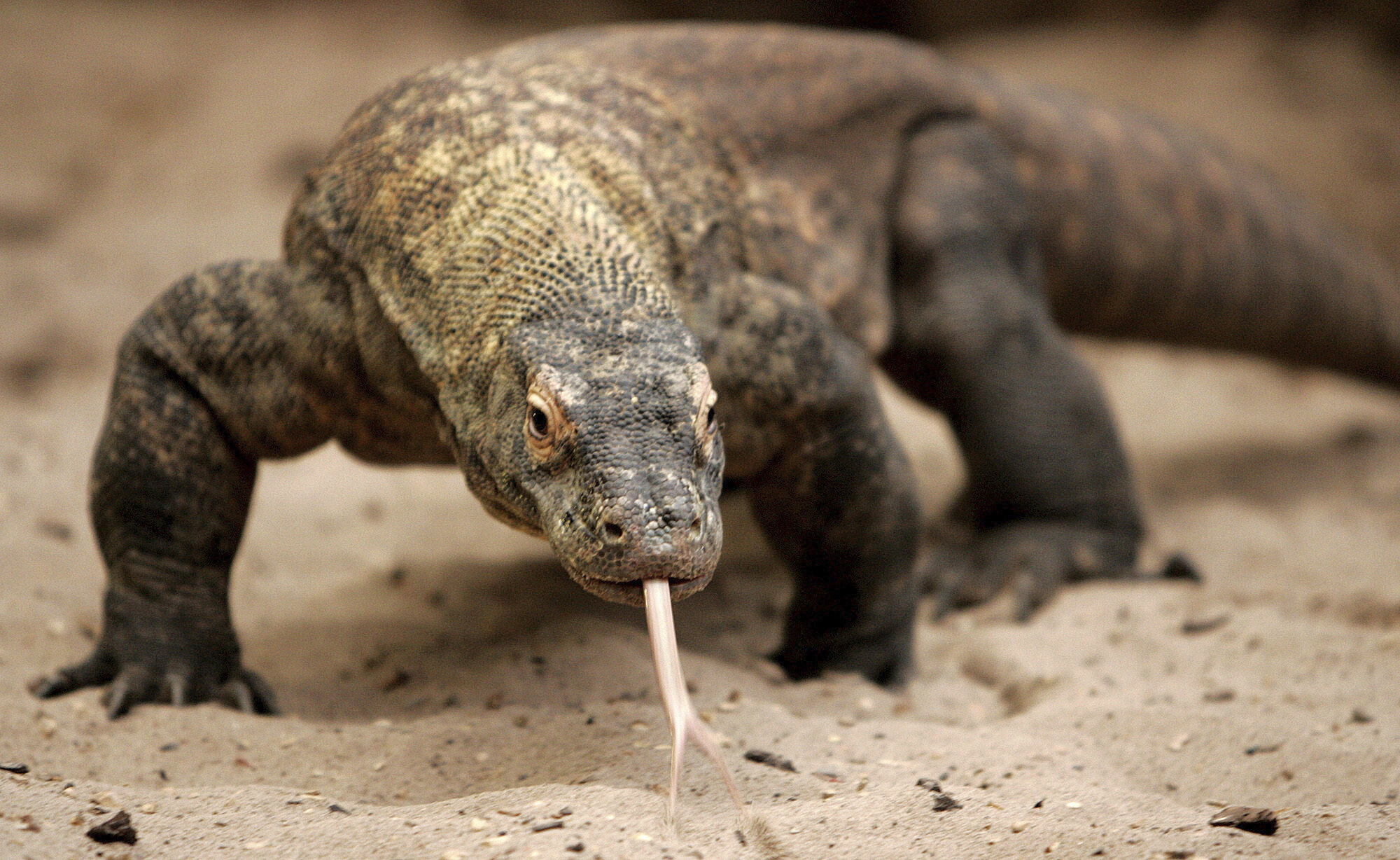A team of scientists have discovered that the teeth of Komodo dragons (Varanus komodoensis) are coated with iron.
This protective layer keeps the serrated edges of their teeth sharp, meaning the 80kg lizards can tear quickly and efficiently through the flesh of their prey.
The discovery, published in Nature Ecology & Evolution, may also provide clues to how dinosaurs such as the Tyrannosaurus rex killed and ate its prey.
Komodo dragons are a species of monitor lizard native to Indonesia. Weighing in at around 80kg, they are the heaviest lizard in the world. They’re also one of the most ferocious, with sharp, curved teeth that they use to hunt and rip apart all kinds of prey, from small reptiles and birds to deer, horses and even water buffalo.
How are these lizards able to tear through meat so easily? With iron-tipped teeth, say researchers from King’s College London.
The researchers found that Komodo dragons have concentrated layers of iron at various locations on their teeth, which helps keep them sharp.
Many reptiles have iron in their teeth, but it’s the high levels of iron along the cutting edges and tips of the Komodo’s teeth that makes them different. In fact, the iron is so dense that it stains the teeth orange – crocodiles and other monitor lizards, by comparison, have so little that the iron is often invisible.

The scientists made the discovery after a study on the teeth of Ganas, a 15-year-old Komodo dragon that lived at London Zoo.
Through advanced imaging and chemical analysis, they were able to observe that the iron in the Komodo dragon’s enamel is concentrated into a thin coating on top of their tooth serrations and tips.

The findings present new questions about how extinct species such as dinosaurs lived and ate, says Dr Aaron LeBlanc, lecturer in Dental Biosciences at King’s College London and the study’s lead author.
“Komodo dragons have curved, serrated teeth to rip and tear their prey just like those of meat-eating dinosaurs. We want to use this similarity to learn more about how carnivorous dinosaurs might have ate and if they used iron in their teeth the same way as the Komodo dragon.”
Dr LeBlan says that limitations in technology make it impossible to see whether fossilised dinosaur teeth have high levels of iron or not. “We think that the chemical changes which take place during the fossilisation process obscure how much iron was present to start with,” Dr LeBlan explains.
“What we did find, though, was that larger meat-eating dinosaurs, like Tyrannosaurs, did change the structure of the enamel itself on the cutting edges of their teeth. So, while Komodo dragons have altered the chemistry of their teeth, some dinosaurs altered the structure of their dental enamel to maintain a sharp cutting edge.
“With further analysis of the Komodo teeth we may be able to find other markers in the iron coating that aren’t changed during fossilisation. With markers like that we would know with certainty whether dinosaurs also had iron-coated teeth and have a greater understanding of these ferocious predators.”
This article by Daniel Graham was first published by Discover Wildlife on 1 August 2024. Lead Image: The Komodo dragon (Varanus komodoensis), also known as the Komodo monitor, is a species of lizard found in the Indonesian islands of Komodo, Rinca, Flores, Gili Motang and Padar. Credit: Getty.
What you can do
Help to save wildlife by donating as little as $1 – It only takes a minute.


Leave a Reply